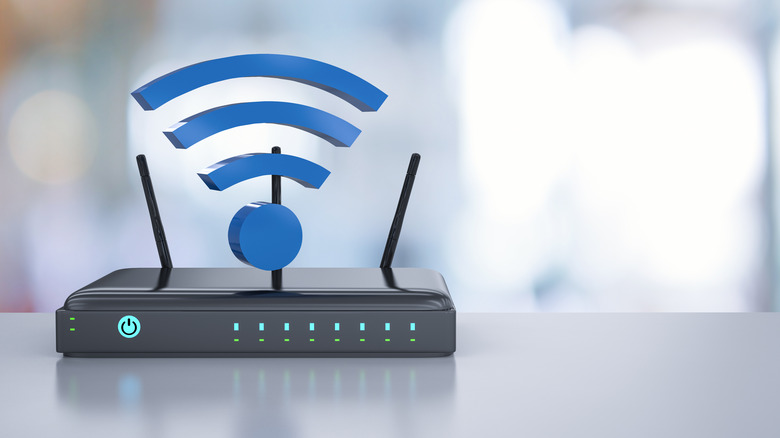This Aluminum Foil Hack Can Fix Your Weak Wi-Fi (But There's A Major Catch)
Spotty or weak Wi-Fi is a common problem, and your router is often the culprit. You might get a strong signal in one room but barely any Wi-Fi in another. Ideally, your Wi-Fi router should be placed in the center of your home to distribute the signal equally. Even if you do this, other obstructions like walls, insulation, and furniture can impede signal strength.
Since Wi-Fi relies on radio frequencies to send and receive data, other electrical signals can impact coverage. Appliances like microwaves, baby monitors, wireless cameras, and some satellite TV receivers can interfere with Wi-Fi strength. An older router could also be the issue, particularly if it isn't capable of fast speeds or has poor range.
There are a few things you can do to fix your weak Wi-Fi. Apart from repositioning the router, you can also invest in a signal booster or mesh Wi-Fi system to evenly distribute the signal across your home. If you're looking for a cheaper DIY fix, research has shown that a simple household item — aluminum foil — can improve your Wi-Fi signal. However, the solution has a big catch.
You'll need a 3D printed reflector for this hack to work
You might have heard about wrapping your Wi-Fi router in foil to increase signal strength, but for the hack to be effective, you will need a 3D-printed reflector. Researchers at Dartmouth College created a program that custom prints a reflector for your home after taking into account the interior layout, location of the router, areas you want the signal increased, and areas you want it decreased.
This information is fed into a program called WiPrint, which creates an optimized reflector shape for your router and home in about 23 minutes. The shape can then be fed into a 3D printer. The solution is quick and inexpensive, costing about $35 to fabricate. The reflector is covered with aluminum foil and placed around the antennas of your wireless router. While materials like copper and silver also work, aluminum is the cheapest and most accessible.
During testing, the researchers found that using a 3D-printed reflector and aluminum foil boosted the Wi-Fi signal by up to 55.1% in target areas while weakening it in others by -63.3%. This system not only increases Wi-Fi efficiency but also makes it more difficult for hackers to access your Wi-Fi by limiting the signal to particular areas of your home.
Aluminum foil won't work on its own
While aluminum foil is a great conductor and reflector of radio waves, it's only effective at boosting Wi-Fi strength if the reflector is shaped correctly. Some hacks use a cut-open soda can placed in a circular shape around the router, but this might cause the signal to be boosted only in one direction. As a result, other areas of your home will receive reduced signal strength. Other solutions utilize a piece of cardboard covered in foil and placed around your router's antenna, but even this doesn't equally distribute your home Wi-Fi network.
You can try both these hacks to focus the Wi-Fi signal toward a particular area, but a 3D-printed reflector is your best bet for a more permanent solution. Unfortunately, it doesn't appear that the Dartmouth College researchers who created the WiPrint program have actually released the software to custom print a 3D reflector. What has been established, though, is that aluminum foil really does work to boost your Wi-Fi signal when paired with the right reflector.

